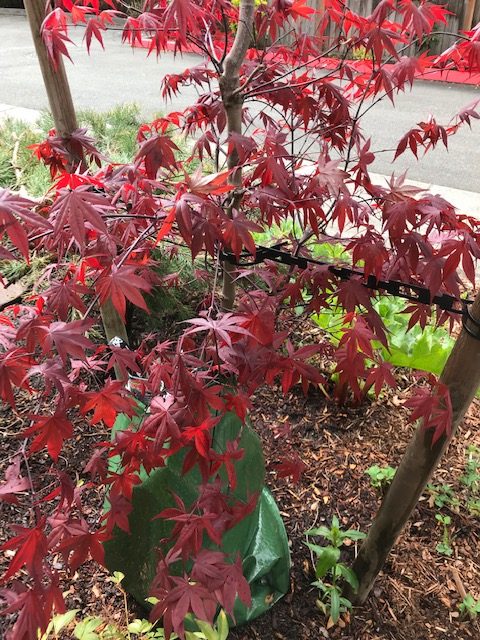Tag: being open to the unexpected
Learning from experiences
Never regret. If it’s good, it’s wonderful. If it’s bad, it’s experience.
-Victoria Holt
Lately I’ve had several work and personal situations that followed the same pattern:
- I put a lot of time and effort into a project.
- It did not go as I had hoped, and I was disappointed.
- Then, something changed, and the project turned out even better than I planned.
After noticing this trend, I reflected on how I had dealt with the disappointments. I was glad that I hadn’t wasted too much energy feeling frustrated, angry or sad because in each case, things ended up better than I had originally hoped for.
I’m glad for the positive endings. But even if I hadn’t been happily surprised, what good would it have done to dwell on the negative? Naturally, I was dissatisfied when at first, I didn’t get the results I wanted. However, those feelings were softened by focusing on what I had learned from the experiences.
In addition to the coincidence of this pattern occurring several times within a few weeks, what I remember is that the positive outcomes were unexpected. I was going down paths with clear visions of end results that did not materialize.
As it turned out, the work I did along the way was the important part. I learned from the experience…and it turned out wonderfully.
Dying trees and new jobs

I’d hoped the tree would recover but after two years of stunted growth and increasingly bare limbs, I had to face that this wasn’t going to happen. A fungus got in the soil and the 16-year-old Japanese maple was too weakened to heal. It was sad; I had watched that red-leafed maple grow from 6 feet all the way up to the top of my second story window. I wanted to give it a chance.
I finally accepted that to have a healthy tree that will live a long time and grow to a full height, the diseased tree would have to be removed. Even part of the roots, to make room for the new planting.
I wanted to replace it with an identical tree that matched my neighbors’, but that would leave the new tree susceptible to the same infection. Instead, the arborist recommended a different species that is immune to the fungus.
I had invested a lot of time in caring for the tree and it was familiar and important to me. In the last few years it was finally tall enough to offer some shade on the hot, western side of my home. A new planting would be expensive, especially one that was partially grown. Although I had good reasons to keep my tree, or at least a replica of it, it wasn’t the smartest choice.
This is a great metaphor for a job that is no longer right for you. Just as I was invested in my tree and the shade it provided, you might be deeply enmeshed in your current role and have valid reasons why you want to stay, even though parts of your job are “diseased.”
And just as I knew that a replacement would have costs, including years of growing tall enough to provide protection from the sun, a new job often means losing some benefits and requires time to develop credibility and goodwill with new coworkers and managers.
Thinking about what you’ll give up and the risks of making a change can be paralyzing. But if I had replaced the maple when it first showed signs of damage, I would be much closer to having the shade I want for my window and balcony. Waiting didn’t change the inevitable outcome…it just raised the price of the tree with inflation and lengthened the time I’ll have to wait for it to grow tall.
If you are unhappy in your job but delay getting a new one, how much more will your confidence and stress levels continue to suffer? Bad jobs drain energy and wellbeing. It’s easier to look for a job and convince interviewers to hire you when you’re mentally and physically strong.
Back in November, I finally had the tree replaced. The new planting was about 6 feet tall but thin and bare-branched. I had a bag around the trunk to fill with water during dry weather and nurtured the heck out of that tree. It paid off. The over-wintering allowed roots to get established and by the time it started leafing, it had already grown more than a foot taller.
And then, because life is like that: PLOT TWIST!

As the leaves started to develop in April, I kept remarking to my neighbors that even though it was a different species, it looked very similar to the other Japanese maples. After the third time I said this, it dawned on me that they had planted the wrong tree.
The arborist had provided two quotes back in November. One was for an “Acer Palmatum Blood Good” – a Japanese maple varietal and the other was for a Stewartia Pseudocamelia. I ordered the Stewartia but they planted the maple.
At this point, I was attached to this little tree that had been growing for months and reluctant to start over. After multiple conversations with the arborist, I agreed that the best long-term choice was to replace the maple with the Stewartia because it isn’t susceptible to the fungus in the soil. But when the day came, they called me from the nursery to double check that the green-leaved Stewartia was what I wanted.
Uh…it had been over 7 months since I first met with the arborist, but I remember seeing a picture of a red-leafed tree. On the phone, they said that the tree turns red in autumn, but is green the rest of the year.
That was enough for me to say no to the replacement.
My new tree was already established, thriving and matched the neighborhood trees. I know there’s a risk that if the limbs suffer damage, it won’t be able to fight off the fungus and I will have to replace it. It is not an ideal environment for its longevity. But right now, the young maple is healthy and beautiful, and I want to keep it. If in later years it becomes diseased, I will immediately have it replaced – with as large of a tree as possible to more quickly reach the height I want.
This is another metaphor for changing jobs. You go into a new role with expectations based on your research and what you’ve been told, but sometimes the reality is different. Your day-to-day tasks aren’t what you thought they would be. The manager who hired you leaves, and now you must get to know their successor. The organization’s priorities change, and you are asked to cancel a project or take on a new set of responsibilities.
If you end up disliking your new job, you don’t have to suffer through it. You can attempt to negotiate with your management to improve what isn’t working, especially the parts that are different from the job description you agreed to. If that doesn’t work, you can start the job search again. Just because it’s a new role doesn’t mean you are stuck with it.
Maybe, though, once the surprise has worn off after finding your new role isn’t what you anticipated, you’ll realize that it’s fine. All changes come with risk. Calculated risks are better than steadily declining in a diseased environment.




Recent Comments